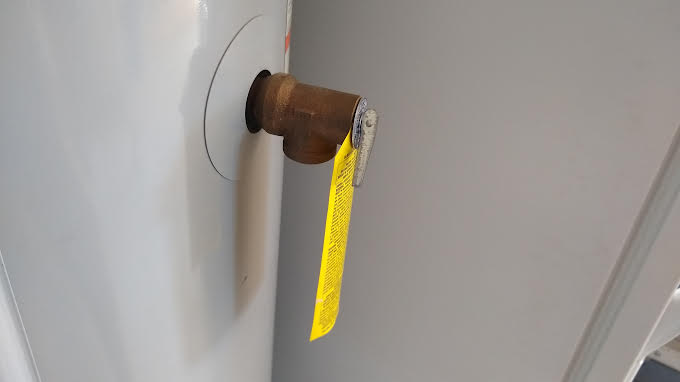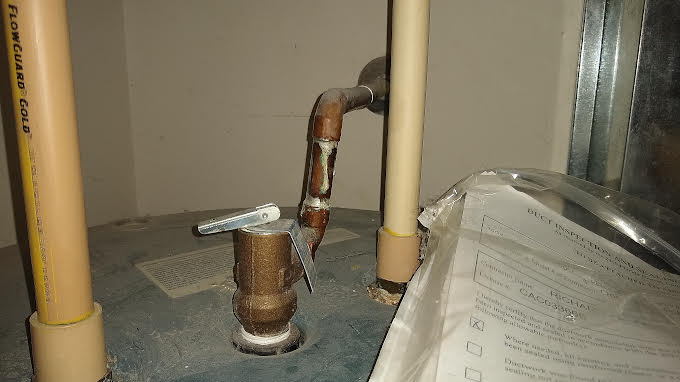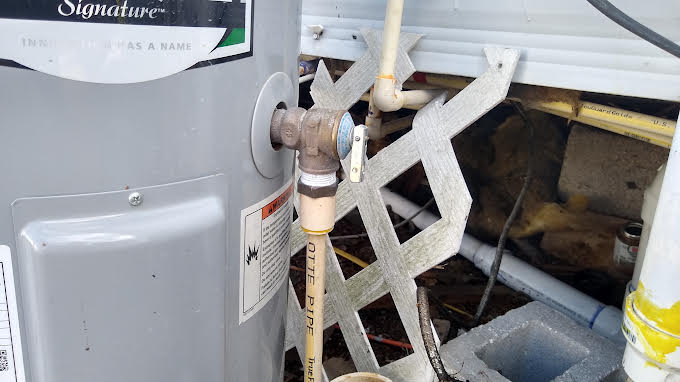A TPR valve is a safety device that is located on the water heater. The name stands for Temperature Pressure Relief. If temperatures and pressures inside of the water heater become too high, this small valve will open to allow steam and excessively hot water to be released from the water heater. This protects the water heater from damage, and protects the occupants from hazards a damaged water heater will bring.
In addition to having this valve, there should also be a way to direct where the water and steam release to. This is achieved with a Blow Off Pipe. A blow off pipe is simply a 3/4 inch pipe made of heat-resistant plumbing materials (such as copper or CPVC) that connects to the TPR valve and travels to a safe and visible location, either within 6 inches of the floor at the water heater, or to an exterior vent. By directing where this steam releases to, the occupants can identify that the TPR has tripped, and be able to shut off the water heater without coming into contact with scalding temperatures.
Oftentimes, the blow off pipe on the TPR valve may be noted to be reduced from the proper ¾ inch to a smaller size. A TPR valve should always have a clear, unobstructed path for steam to travel when needed. Reducing this pipe does not allow for the valve to discharge at it’s full velocity, increasing the risks of pressure buildup inside the water heater. This situation is also present when the blow off pipe is run in a way that does not allow water to flow freely through it, such as traveling upwards out of the valve.
Ensuring that the TPR valve is present and the blow off pipe is correctly installed will go a long way in keeping you and your family safe in your home.



